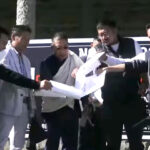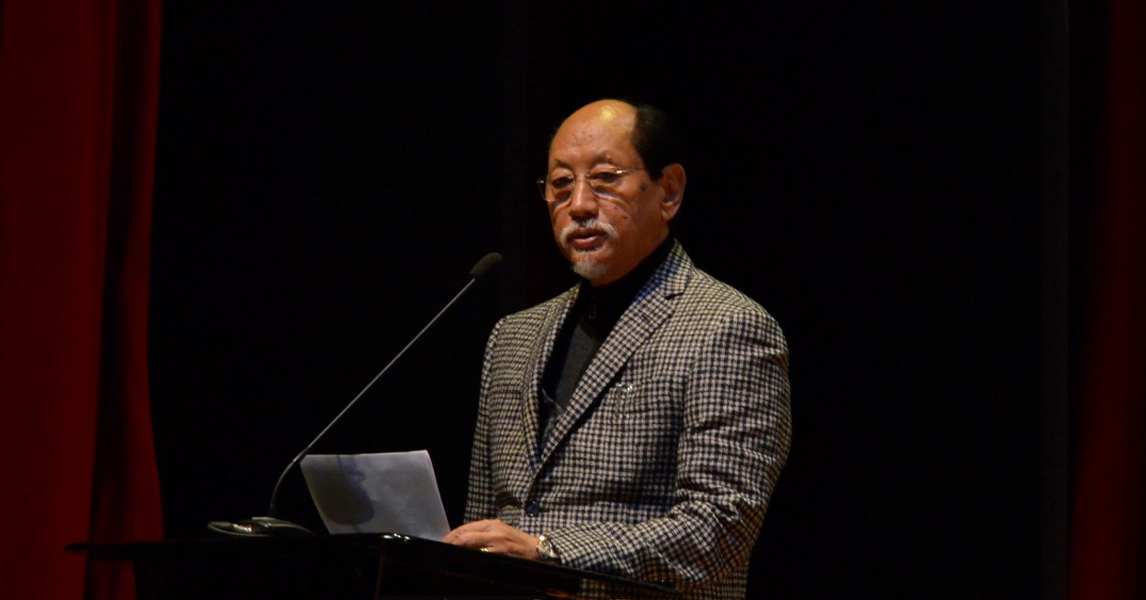Between 2008-2010, an archaeological excavation was jointly carried out by the Department of Art and Culture, Government of Nagaland and the Anthropological Society of Nagaland, at several sites in Nagaland including Chungliyimti, the village where the Ao Nagas trace their origin. Radio-carbon dating of the excavated charred botanical remains at Chungliyimti assigned a time period between AD 980-1647 AD based on the calibrated age range.1
Furthermore, the Ahom Buranjis, which are historical chronicles and manuscripts detailing the Ahoms’ history, reveal that the Nagas had already established themselves in the Naga Hills when the Ahoms arrived in Assam during the 13th century. Drawing from these two well-documented scientific and historical accounts, it can be concluded that the Ao Nagas, who currently reside in Mokokchung district of modern-day Nagaland, have been living in this region alongside other Naga tribes for over a millennium. Isolated from the world for centuries, the Ao Nagas were the first among the Naga tribes to encounter modernity when American missionaries arrived in their region toward the end of the 19th Century. Within a short span of time, these missionaries succeeded in transforming the once headhunting tribes into devout followers of Christianity. This religious conversion heralded a new era of education and modern civilization for the Ao Nagas.
Leveraging the advantage of being the first among the Nagas to receive a Western education, the Ao Nagas made rapid strides in various fields. Until the close of the 20th century, they were at the forefront of politics and education in Nagaland. Today, there are over 200,000 Ao Nagas inhibiting the districts of Mokokchung, Kohima, and Dimapur and other districts within Nagaland, while others have settled across other states in India and even abroad. However, as the 21st century progresses, the Ao Nagas face the potential threat of diminishing significance.
One of the primary concerns for the Ao Nagas is their rapidly declining population. According to a recent independent survey conducted by the writer, an alarming 90% of the Ao villages surveyed in the Mokokchung district experienced negative population growth between 2020 and 2022. For example, in one village with approximately 600-700 residents, the period saw 16 deaths and a mere 2 births. If this trend persists, the village is projected to be deserted by 2065. Similarly, another village with a population of around 3,000 reported 32 deaths and 10 births during the same timeframe. If the current trajectory continues, the village’s population will dwindle to just 321 by 2099. A significant decline in birth rates across towns and villages has been observed in all the towns and villages.
In the 1960s and 1970s, an average Ao family had around 8-9 children, a figure that decreased to 4-5 in the 1980s and 1990s2. Presently, due to factors such as delayed marriages, decreased fertility rates, and increased costs of living, present day Ao couples have either one or two children. If this trend continues, the population is expected to plummet rapidly in the coming years. To put this into perspective, considering that the current Ao Naga population stands at 200,000 in 2023 and assuming a negative annual growth rate of 2%, the population will shrink to 40,580 by 2099. Similarly, with negative growth rates of 1.5% and 1%, the Ao Nagas’ population in 2099 would be 57,500 and 65,240, respectively. Of course, these are speculative scenarios that might overstate the situation, and without comprehensive data on fertility rates, birth rates, and death rates for the entire population, it is impossible to predict the rate of population decline. Nevertheless, the underlying message is clear.
Negative population growth is not a strange phenomenon. With the fertility rates decreasing, many European countries are witnessing negative population growth. Take Greece for example. Since 2005, Greece has experienced a population decline, dropping from 11.23 million people to 10.42 million in 15 years. The most recent projections show a continuation of this decline, resulting in a population of 9.03 million by 2050 and more than 50% decline by 2099. Shifting demographics are a concern across other parts of East Asia, too. South Korea recently broke its own record for the world’s lowest fertility rate, with data from November 2022 showing a South Korean woman will have an average of 0.79 children in her lifetime – far below the 2.1 needed to maintain a stable population. Next is Japan, whose fertility rate fell for the sixth consecutive year to 1.30 in 2021. The Japanese Statistics Bureau estimates that the Japan will lose 25 million people in the next 25 years.3
Another pressing concern is the diminishing use of the Ao Naga language over time. Ao Nagas primarily speak the Chungli and Mongsen languages/dialects, with additional indigenous languages/dialects specific to villages. However, an increased emphasis on English and Western education over the years has contributed to the decline of the indigenous languages. The younger generation, particularly those born in the 21st century and living outside Mokokchung district, struggles to communicate in their mother tongue. In the absence of significant interventions, which appear unlikely, the use of Ao Naga indigenous languages will continue to decline in the coming years, further eroding the tribe’s linguistic heritage.
Picture a scenario in 2050, where Chumukedima city in Nagaland has evolved into the state’s IT and AI hub. Let’s assume that a hundred Ao families reside in Chumukedia city in 2050, descendants of those who have lived in the area for generations or migrants from Mokokchung district. These families can neither speak nor understand the Ao languages, and they no longer practice the customs and traditions of the Ao Nagas. Instead, they communicate in English, Nagamese, or Hindi. They attend virtual church services conducted in English and have no attributes belonging to the Ao Naga tribe. Can this group of people who neither speak the Ao Naga language nor have any defining traits of the Ao Nagas be considered Ao Nagas? This raises questions about identity and the defining characteristics of the Ao Nagas. Is biology the sole determinant of tribal identity? Suppose an individual in 2050, born to an Ao Naga father and a Bengali mother, raised in Mumbai, but cannot speak the Ao Naga languages or know anything about the tribe’s customs and culture. In that case, will he still be considered an Ao Naga? Perhaps only in legal certificates and documents. Facing a decreasing birth rate and the gradual erosion of their heritage, culture, and languages, the Ao Nagas are currently confronting a future in which they may lose their identity, relevance, and significance. For a tribe that presently prides itself in past glories, and is at risk of losing its prominence within the next fifty years, there is cause for concern.
As an Ao Naga born and raised in Mokokchung town during the late 1980s, I have witnessed the slow disintegration of our language and culture, perhaps due to the forces of globalization. I fondly remember the 1990s, when Ao Naga villages were bustling with life and activity. No matter when you visited a village, you would encounter a lively, energetic, and vibrant atmosphere, with children joyfully playing in the streets and elderly folks basking in the sun’s warm embrace outside their homes. Today, the story is starkly different. The combination of urban migration and population decline has left many villages eerily quiet, coming alive only briefly during the Christmas and New Year holidays. As I learn about the Ao Nagas’ impressive history, having inhabited the Mokokchung district of Nagaland for over a thousand years, I am filled with immense pride. However, the chilling thought that we might lose our identity and significance within the next fifty years fills my heart with a profound sense of sorrow and trepidation.
With a bleak future ahead of us, it is heart-breaking to see the issues that preoccupy us today as a community. If a time traveler from the 2090s were to access the discussions taking place on our social media platforms, community meetings, and at our dinner tables, they would likely shake their heads in dismay and return to their own time. History teaches us one important lesson: political regimes, laws, and demographics change all the time. It is not difficult to imagine a future where the remaining few of us are subjugated and enslaved in our own lands, the very lands our ancestors lived, thrived, and protected for centuries. However, the figures of the long-awaited yet to be conducted official census of the Govt. may not paint a bleak future for us.
References:
1. Jamir, T. and Hazarika, M. (eds.) (2014) 50 Years After Daojali-Hading: Emerging Perspectives in the Archaeology of Northeast India: Essays in Honour of Tarun Chandra Sharma. New Delhi: Research India Press. pp. 473-485.
2. Ozukum, S. (2023). Birthrates and Deathrates in Mokokchung [Survey]. Unpublished raw data.
3. Siripala, T. (2023, January 28). Japan’s Population Crisis Nears Point of No Return. The Diplomat. https://thediplomat.com/2023/01/japans-population-crisis-nears-point-of-no-return



